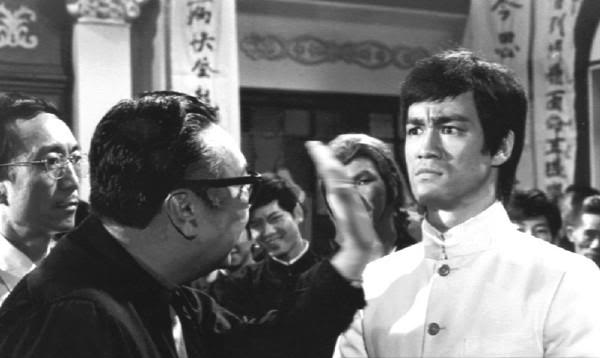Lo Wei Capsule Reviews

Brothers Five (1970) — December 3, 2010
Cheng Pei-pei (Come Drink With Me, Crouching Tiger, Hidden Dragon) plays the daughter of a kung fu master who has sworn to reunite the separated children of the title so they can take revenge on the villain who killed their father and whose gang terrorizes the local town and countryside. The brothers have no idea of their family history, but have each learned complementary skills that only they can combine, Voltron-style, to defeat the bad guy. The fight scenes are the big draw here, and they are impressive. More unusual is the way director Lo Wei films them, often in overhead longshots that are far more panoramic and lyrical than you usually get in Shaw Brothers films of this period. This lends his big action set-pieces, with dozens of soldiers fighting multiple heroes in discrete parts of the frame, a scope and grandeur unlike anything else I’ve seen.
The Shadow Whip (1971) — January 16, 2011
Cheng Pei-pei stars as the adopted daughter of the world’s foremost expert in bullwhip kung fu. When the people who killed her parents and framed him for theft track them down, it’s up to her and a handsome traveler to defeat the bad guys and right wrongs and such. Directed by Lo Wei, whose Brothers Five, made the previous year and also starring Cheng, I found so impressive. There are a few of the signature overhead group choreography shots that were so striking in that film here, but mostly the movie is done in by the cheapness of the stunts (including the most obvious wire I’ve ever seen in a kung fu film) and the inherent impossibility of creating good fight choreography when the protagonist’s weapon is a whip. It just looks dumb. And speaking of looking dumb, poor Cheng Pei-pei is dressed like Santa Claus through the whole thing.
The Big Boss (1971) — June 28, 2013
Bruce Lee may be the most narcissistic movie star of all-time, but you can’t help but be entranced by him — he’s just as magnetic as he thinks he is.
Immigrant workers in a foreign country, exploited by a rapacious capitalist as drug dealer. Takes forever for Bruce to realize that maybe his boss is lying to him. But once he does, everyone dies.
Fist of Fury (1972) — May 2, 2014
Amazing how simple the plot of Fist of Fury is in comparison with Gordon Chan’s Jet Li-starring remake Fist of Legend. Bruce Lee’s Chen Zhen is nothing more or less than a force of nature, bursting on screen in agonized grief, progressing from there to an agonized murderous rampage (in 1930s Shanghai he returns to find his master has been killed; he learns it was by the Japanese, he kills them). Only occasionally is he allowed to express anything other than agony: when he adopts disguises to spy on the Japanese; in his one romantic scene with Nora Miao. Otherwise he may as well be The Hulk. No depth, no complexity (compare Li’s Chen Zhen, torn between two cultures and two families, genuinely mixed in his sympathies), simply the pure muscular expression of violent revolution, of the (racial) underclass rising up against their (apparently motiveless?) oppressors.
There are hints at self-awareness, of nuance: the fact that so many of Lee’s fellow Chinese feel the effects of his violence, the collateral damage of his rampage, is felt. And the tortured expressions, often in slow motion, that take over Lee’s face when he administers a killing blow convey not the orgasmic release of violence, but the corruption of the mind and soul that each act of destruction takes on him (compare to the distancing puns and wisecracks that accompany such displays in the 80s films of Schwarzenegger and Stallone). Still, it’s not hard at all to see why it was a hit, despite the acting, screenplay, sets, direction, characters, sound design, etc, all cheap and chintzy relative to the films the Shaw Brothers were putting out at the same time. Even another Golden Harvest production like Hapkido, with a very similar Chinese vs. Japanese premise, released six months later in 1972, looks better and had more thought put into its visual style.
